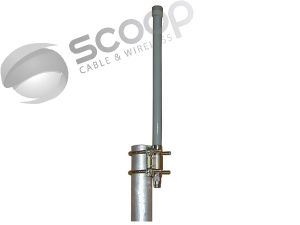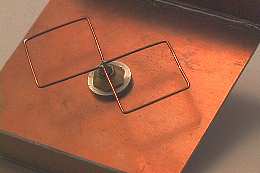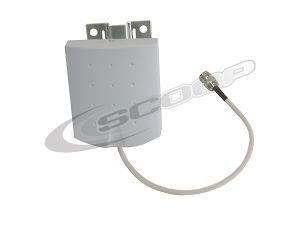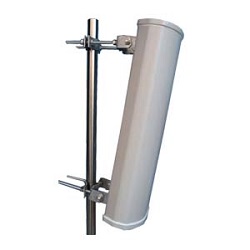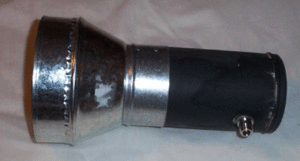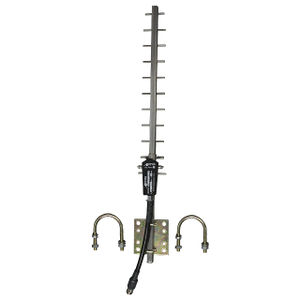Antennas
Contents
Omnidirectional antenna
An omnidirectional antenna is an antenna system which radiates power uniformly in one plane with a directive pattern shape in a perpendicular plane. This pattern is often described as "donut shaped". Di-pole antennas found on most indoor wireless equipment is also an example of an omni directional antenna.
Commercial Omnidirectional Antennas
Homebrew howto's
Directional antenna
BiQuad
BiQuad antennas are normally homebrew antennas. They are designed to work on the 802.11b standard wifi links. Their typical gain is 8-10 dBi.
Homebrew howto's
- http://www.trevormarshall.com/biquad.htm
- http://www.xs4all.nl/~tom1572/eng/index.htm
- http://www.seattlewireless.net/DirectionalBiQuad
Parabolic
A parabolic antenna is a high-gain reflector antenna. It typically consists of a parabolic reflector with a small feed antenna at its focus. The reflector is a metallic surface formed into a paraboloid of revolution and (usually) truncated in a circular rim that forms the diameter of the antenna. This paraboloid possesses a distinct focal point by virtue of having the reflective property of parabolas in that a point light source at this focus produces a parallel light beam aligned with the axis of revolution. This design adjusted for 802.11b,g (2.4Ghz) and 802.11a (5.8Ghz) frequencies.
Grid antennas and Dish antennas are examples of a parabolic antenna.
Commercial Parabolic Antennas
Homebrew howto's
Patch
A patch antenna is a popular antenna type, which gains its name from the fact that it basically consists of a metal patch suspended over a ground plane. The assembly is usually contained in a plastic radome, which protects the structure from damage (as well as concealing its essential simplicity). Patch antennas are simple to fabricate and easy to modify and customize. This design adjusted for 802.11b,g (2.4Ghz) and 802.11a (5.8Ghz) frequencies.
Patch antenna's are also widely know as (Flat) Panel Antennas.
Commercial Patch Antennas
Homebrew howto's
Sector
A sector antenna is a kind of directional antenna with a sector-shaped radiation pattern. They have a wide beamspread, typically 90 or 120 degrees. These antennas are typically installed in base station sites for point-to-multipoint connections. Cell companies also use this type of antenna for their network coverage. This design adjusted for 802.11b,g (2.4Ghz) and 802.11a (5.8Ghz) frequencies.
Commercial Sector Antennas
- 2.4GHz 16dBi 120 Degree Vertical Sector Antenna
- 5.1-5.8GHz 15dBi 120' Vertical Sector
- 5.1-5.8GHz 17dBi 90' Vertical Sector
Homebrew howto's
Waveguide
A waveguide is a very low loss transmission line. It allows us to propagate signals to a number of smaller antennas (slots). The signal is coupled into the waveguide with a simple coaxial probe, and as it travels along the guide it traverses the slots. Each of these slots allows a little of the energy to radiate. Although commercial waveguide antennas are available, the most popular waveguides are homebrew. The well known cantenna is an example of a waveguide antenna. Their design is for 802.11b,g networks.
Homebrew howto's
- http://trevormarshall.com/waveguides.htm
- http://www.seattlewireless.net/SlottedWaveguide
- http://www.seattlewireless.net/CookieCantenna
Yagi
A Yagi-Uda Antenna, commonly known simply as a Yagi antenna or Yagi, is a directional antenna system[1] consisting of an array of a dipole and additional closely coupled parasitic elements (usually a reflector and one or more directors). The dipole in the array is driven, and another element, 10% longer, operates as a reflector. Other shorter parasitic elements are typically added in front of the dipole as directors. This arrangement gives the antenna directionality that a single dipole lacks. Yagis are directional along the axis perpendicular to the dipole in the plane of the elements, from the reflector through the driven element and out via the director(s). If one holds out one's arms to form a dipole and has the reflector behind oneself, one would receive signals with maximum gain from in front of oneself.This design adjusted for 802.11b,g (2.4Ghz) and 802.11a (5.8Ghz) frequencies.
Commercial Yagi Antennas
Homebrew howto's
